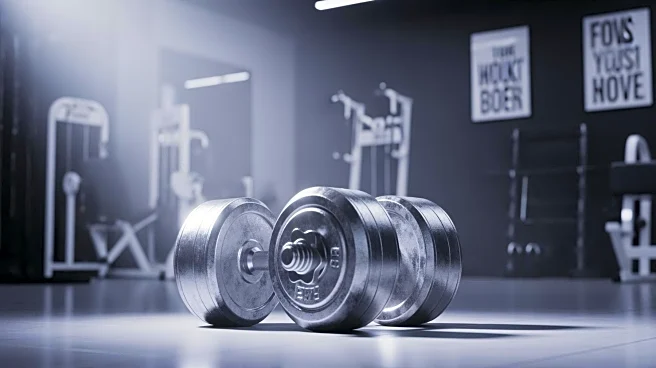What's Happening?
Marcus Filly, a prominent figure in the CrossFit community, has shared insights into the differences between CrossFit and the Grid League, highlighting the distinct pacing and intensity of each. According to Filly, CrossFit is often perceived as a high-intensity
sport, but it is actually more about pacing, aerobic capacity, and strategy. In contrast, the Grid League is described as a 'max-effort sprint' that places significant stress on the nervous system. Filly's experiences in both sports have led him to conclude that while CrossFit challenges endurance and strength, the Grid League's intensity can be physically overwhelming, leading to severe physical strain and chronic pain.
Why It's Important?
Filly's observations are significant as they shed light on the physical demands and potential health impacts of different competitive fitness regimes. His experiences underscore the importance of sustainable training practices that prioritize long-term health over short-term performance gains. This perspective is particularly relevant for athletes and fitness enthusiasts who may be drawn to high-intensity sports without fully understanding the potential risks. Filly's shift towards Functional Bodybuilding, which emphasizes movement quality and joint support, reflects a growing trend in the fitness industry towards more balanced and sustainable training methodologies.
What's Next?
Following his experiences, Marcus Filly has transitioned to promoting Functional Bodybuilding, a training approach that balances intensity with recovery and joint health. This shift may influence other athletes to reconsider their training strategies, potentially leading to broader changes in how competitive fitness is approached. As more athletes prioritize longevity and sustainable practices, there could be a shift in the fitness industry towards training programs that emphasize long-term health and performance.
Beyond the Headlines
Filly's critique of CrossFit and the Grid League highlights broader discussions about the ethics of high-intensity sports and the responsibility of fitness organizations to ensure the well-being of their athletes. As the fitness industry evolves, there may be increased scrutiny on the health implications of various training programs, prompting a reevaluation of how these sports are marketed and practiced.













